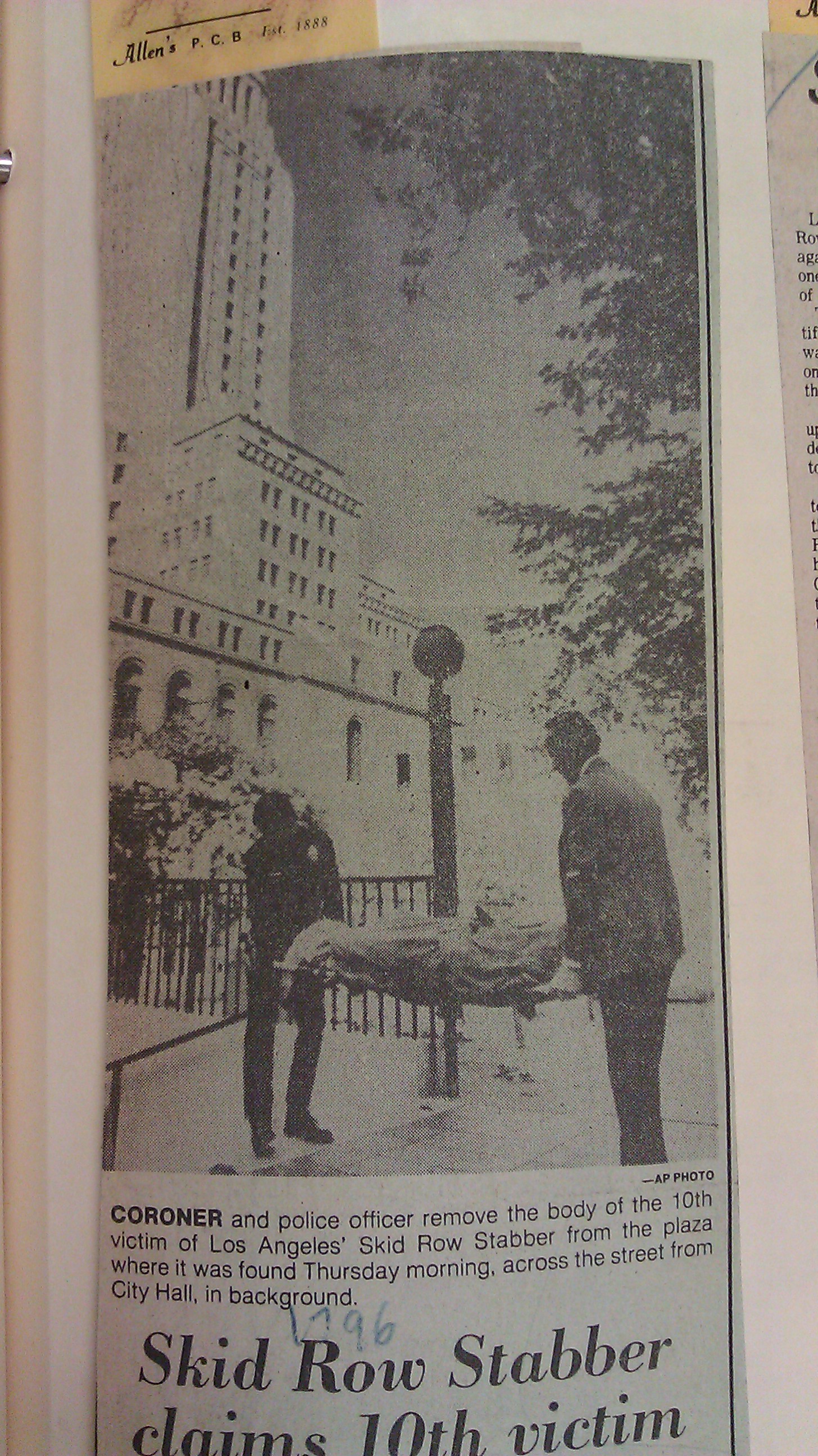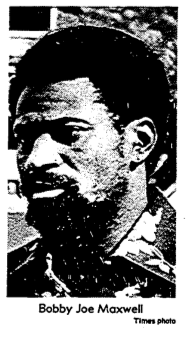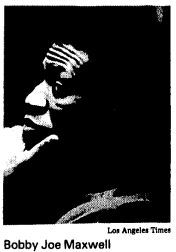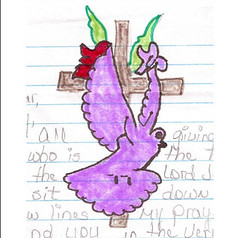 Whether or not to use cosmetics would be a social and feminist issue in the 1910s and 1920s; however, in the late 1800s the hot button issue for women was dress reform. Many women were tired of being laced into corsets so tight that their health was permanently impaired. Corseting could result in damaged or broken ribs and difficulty in breathing (often the shortness of breath was mistaken for the symptoms of tuberculosis). And the romantic fainting and swooning spells which required households to have smelling salts on hand were not so romantic when you consider that they were the result of restricted lung capacity. There is also compelling evidence that some women used corsets as a way to terminate an unwanted pregnancy!
Whether or not to use cosmetics would be a social and feminist issue in the 1910s and 1920s; however, in the late 1800s the hot button issue for women was dress reform. Many women were tired of being laced into corsets so tight that their health was permanently impaired. Corseting could result in damaged or broken ribs and difficulty in breathing (often the shortness of breath was mistaken for the symptoms of tuberculosis). And the romantic fainting and swooning spells which required households to have smelling salts on hand were not so romantic when you consider that they were the result of restricted lung capacity. There is also compelling evidence that some women used corsets as a way to terminate an unwanted pregnancy!  Internal organs rearranged. Sometimes a tight laced corset was a requisite for employment. Women who were employed in dress shops, and therefore required to model the latest fashions, were often subjected to the most painful restraint. The following quote appeared in the Chicago Tribune on November 3, 1907: “The girls are laced up till they are nearly cut in two. Locked corsets are used, the key being kept by the manageress, and the corsets being worn night and day.”
Internal organs rearranged. Sometimes a tight laced corset was a requisite for employment. Women who were employed in dress shops, and therefore required to model the latest fashions, were often subjected to the most painful restraint. The following quote appeared in the Chicago Tribune on November 3, 1907: “The girls are laced up till they are nearly cut in two. Locked corsets are used, the key being kept by the manageress, and the corsets being worn night and day.” 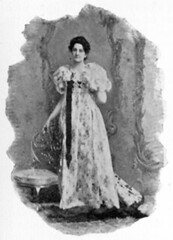 Mrs. Alice Jenness Miller Photo – Univ of Pennsylvania One of the proponents of dress reform for health and aesthetic reasons was Mrs. Alice Jenness Miller. On April 5, 1889 Mrs. Miller appeared at the Los Angeles Theater to give a demonstration of her comfortable dresses and undergarments to the women of the city. According to newspaper accounts it was standing room only in the theater when Mrs. M. took the stage. Men were shooed out of the place so that the reformer could model her undergarments without embarrassment. Miller addressed the crowd and told them that the trunk of clothing that she used for her demonstrations had gone missing, and she made a snarky comment about the incompetence of the men in charge of the trunk. Her remark made the women in the audience chuckle knowingly and when the laughter had subsided Miller launched into her lecture. The women in the audience need not have been worried that Miller’s presentation would suffer as a result of the missing trunk – she was a trooper. She arrived on stage wrapped in a cloak which she dropped dramatically to the floor, revealing a fetching divided skirt which she referred to as leglettes! Divided skirts were gaining in popularity due, in part, to women becoming more interested in participating in sports. Just try to play tennis or ride a bicycle wearing a giant floor length cage under your heavy full length dress – I dare you. Foot binding in China was an extreme version of fashion as oppression – somewhat less obvious were Western fashions such as a bulky bustle and tight corset. Women may not have been kept in cages with iron bars, but their mode of dress kept them in captivity just the same.
Mrs. Alice Jenness Miller Photo – Univ of Pennsylvania One of the proponents of dress reform for health and aesthetic reasons was Mrs. Alice Jenness Miller. On April 5, 1889 Mrs. Miller appeared at the Los Angeles Theater to give a demonstration of her comfortable dresses and undergarments to the women of the city. According to newspaper accounts it was standing room only in the theater when Mrs. M. took the stage. Men were shooed out of the place so that the reformer could model her undergarments without embarrassment. Miller addressed the crowd and told them that the trunk of clothing that she used for her demonstrations had gone missing, and she made a snarky comment about the incompetence of the men in charge of the trunk. Her remark made the women in the audience chuckle knowingly and when the laughter had subsided Miller launched into her lecture. The women in the audience need not have been worried that Miller’s presentation would suffer as a result of the missing trunk – she was a trooper. She arrived on stage wrapped in a cloak which she dropped dramatically to the floor, revealing a fetching divided skirt which she referred to as leglettes! Divided skirts were gaining in popularity due, in part, to women becoming more interested in participating in sports. Just try to play tennis or ride a bicycle wearing a giant floor length cage under your heavy full length dress – I dare you. Foot binding in China was an extreme version of fashion as oppression – somewhat less obvious were Western fashions such as a bulky bustle and tight corset. Women may not have been kept in cages with iron bars, but their mode of dress kept them in captivity just the same. 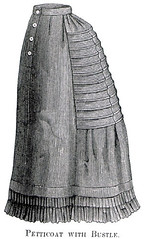 Mrs. Miller advocated a freedom of dress that would be healthful to women, while remaining aesthetically pleasing to all. Her presentation at the Los Angeles Theater was a hit (and she would return a few more times over the years). A Los Angeles Times reporter observed that “All women cannot be of the almost ideal height and weight that distinguish Mrs. Miller, but all, large or small, may carry themselves according to healthful and natural laws…” Amen to that.
Mrs. Miller advocated a freedom of dress that would be healthful to women, while remaining aesthetically pleasing to all. Her presentation at the Los Angeles Theater was a hit (and she would return a few more times over the years). A Los Angeles Times reporter observed that “All women cannot be of the almost ideal height and weight that distinguish Mrs. Miller, but all, large or small, may carry themselves according to healthful and natural laws…” Amen to that.
SBM Skid Row Stabber Seeks Souls For Satan
The first known killer to prey almost exclusively on the down-and-outs on L.A.’s Skid Row was Vaughn Greenwood, that statistical anomaly: a black serial killer crossing the race line in his choice of victims. Greenwood’s spree spanned 1964-75 with two slayings followed by a ten-year gap, then a flurry of brutal attacks that earned him the memorable sobriquet Skid Row Slasher. He was only caught when he left the comfortable depths of the Nickel and hit Hollywood, where he tried to break into Burt Reynolds’ home and dropped an envelope with his name on it.
Between October 1978 and January 1979, the unfortunate denizens of Skid Row again were terrorized, this time by the activities of a Satanist who came out from Tennessee to harvest souls for his dark master. Victims were stabbed as they slept in doorways, in vacant lots or under bushes. This cruder monster was known as the Skid Row Stabber, and he too proved once caught to be a black man, whose indiscriminate victims included Chicanos and Native Americans.
On August 2, 1978, unemployed laborer and Skid Row habitué Bobby Joe Maxwell was arrested downtown for assault with a deadly weapon, and spent about two months in jail. It was shortly after his release that the killings began. On December 14, 1978, police spotted Maxwell standing over an intoxicated man sleeping on the sidewalk, searched him, and found a double-edged stainless steel, cork-handled knife. Maxwell was charged with carrying a concealed weapon, and jailed until January 18, 1979. His knife, which remained in police hands, was later said to be compatible with the wounds on all but two victims.
The two-month break in the killings suggested to police that the assailant might have been incarcerated, and after a search of local jail records, Maxwell was placed under surveillance. He was arrested on April 4, 1979, and his case went to trial in late 1983.
The victims of the three month spree were all attacked close to the Historic Core. They were:
1) Jessie Martinez, 50. Killed October 23, 1978 near Fifth and Wall; charges against Maxwell for this single case were dismissed for insufficient evidence.
2) Jose Cortez, 32. Killed October 28, 1978 in an alley in the 300 block of East 3rd Street.
3) Bruce Emmett Drake, 46. Killed October 30, 1978, 600 block of South Kohler Street.
4) J.P. Henderson, 65. Killed November 4, 1978, on a sidewalk in the 500 block of West 7th Street.
5) David Martin Jones, 39. Killed November 9, 1978 on a Central Library walkway, 630 West 5th Street.
6) Francisco Perez Rodriguez, 57. Killed November 11, 1978 in a parking lot at 416 South Main.
7) Frank Floyd Reed, 36. Killed November 12, 1978 in a parking area at 237 East Fifth Street.
8) Augustine E. Luna, 49. Killed November 12, 1978 behind 448 South Main.
9) Jimmy White Buffalo, 34. Killed November 17, 1978 in a parking lot at 320 South Main.
10) Ricardo Seja, 26. Survived a knifing on November 19, 1978 at Main and 3rd.
11) Jose Ramirez, 27. Survived a knifing on November 19, 1978 at Main and 3rd.
12) Frank Garcia, 45. Killed November 23, 1978, Thanksgiving Day, on a City Hall Plaza bench opposite Parker Center police headquarters. Maxwell’s palm print was found on the bench.
13) Luis Alvarez, 26. Killed January 21, 1979 at 415 Harlem Place.
Convicted on two of ten counts of murder in 1984 and sentenced to life without parole, Bobby Joe Maxwell’s fate was partially sealed on the basis of handwriting evidence. It seems a cardboard scrap labeled “Satan” placed beside one victim matched an inscription in a Greyhound Station bathroom stall that read “My name is Luther. I kill winos to put them out of their misery.” An eyewitness to the killing of David Martin Jones at the library also testified to hearing the slayer declare “I’m Luther, I’m the peacemaker.” Luther was, apparently, Maxwell’s nickname for “Lucifer.” Both texts were matched by handwriting experts to Maxwell’s letters and journals, found in his South Los Angeles apartment.
The trial had some interesting elements, with the judge charging Maxwell’s lawyers with conflict of interest for accepting the book rights to their client’s life story in lieu of fees, since an acquittal would make any book about the case worthless; the State Supreme Court ruled this was an acceptable exchange. Later, they introduced into the penalty phase testimony from retired San Quentin warden Lawrence E. Wilson and former guards about the physical effects of death by gas and a case in which a Death Row inmate was freed after the real killer confessed, and it is likely that this information discouraged jurors from a death sentence.
Maxwell’s victims were lost souls in life and in death. But their killer has not fared much better. Today, Maxwell’s murderous nickname has been forgotten, and in the serial killer memorabilia market, where a signed letter with a crummy tracing of a dove will run you about 12 bucks, he is known by Vaughn Greenwood’s Skid Row Slasher moniker. Last we checked, nobody was buying.
Photos and clippings from the Los Angeles Times. Dove drawing from murderauction.com.
Note that our mapping program does not permit thirteen locations for a single blog post, so we have only linked to three crime scenes. No disrespect is intended towards any other victim.
update, January 9, 2012: The United States Supreme Court has has let stand a 9th Court of Appeals ruling that overturned two murder convictions in this case, due to the tainted testimony of deceased jailhouse snitch Sidney Storch.
update, August 8, 2018:Â As Bobby Joe Maxwell lies near death in a coma just miles from Skid Row, all charges against him have been dropped. The Skid Row Stabber is now a cold case.
Bloody Popcorn Falls on Fourth Street
New Yorker C. Wilson Porter was a notable Gilded Age Angeleno, young, rich (due to a relative who had patented a type of suspender button), alcoholic, obnoxious and very fashionable, with a tendency to camp out for long periods in absent friends’ homes enjoying their hospitality without permission (Mrs. Mary Banning successfully sued him to recover what Porter spent on himself and friends while she was in Mexico, settling for a token $1/day). In April 1899, Porter got into a weird altercation with George W. Durbrow, general manager of the New Liverpool Salt Company, which extracted high quality rock salt from the desert zone that would a few years hence be inundated by the Salton Sea, leaving Mr. Durbrow recuperating at the Van Nuys and seeking $25,000 in a civil suit for painful and disfiguring injuries. 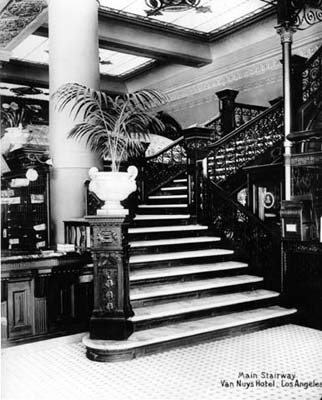 It seems the men were in the Van Nuys hotel bar around one in the morning when Porter decided it would be fun to take some popcorn and “make a snowstorm.” Durbrow thought the suggestion was an affront to his dignity and went to leave, but Porter insisted he play, finally chasing his erstwhile pal, yelling “You can’t shake me this way!” The men found themselves outside the Main Street entrance, and as Durbrow turned, Porter — who was much younger and stronger and drunker — slugged him. Durbrow was knocked out, and Porter began jumping up and down on him and hitting him in the face. Hotel employees heard the ruckus and rescued the unconscious man.
It seems the men were in the Van Nuys hotel bar around one in the morning when Porter decided it would be fun to take some popcorn and “make a snowstorm.” Durbrow thought the suggestion was an affront to his dignity and went to leave, but Porter insisted he play, finally chasing his erstwhile pal, yelling “You can’t shake me this way!” The men found themselves outside the Main Street entrance, and as Durbrow turned, Porter — who was much younger and stronger and drunker — slugged him. Durbrow was knocked out, and Porter began jumping up and down on him and hitting him in the face. Hotel employees heard the ruckus and rescued the unconscious man. 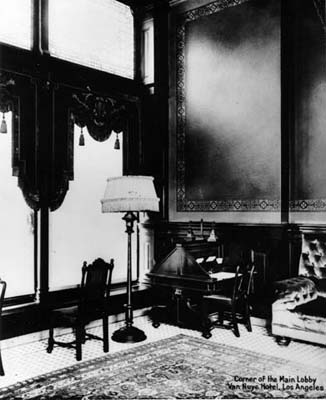 Porter promptly vanished from town, as Officer F.M. Fowler searched widely for him. He was believed to be hiding at Charley Hastings’ Ranch in Sierra Madre, outside the Sheriff’s territory, then to have fled to New York. In June, a deputy assessor entered Brown’s Livery Stable at Hoover and 32nd and found a fine hansom cab, which he immediately recognized as Porter’s–because Porter was the only man in Los Angeles who owned one, having imported it from NY. It was seized for failure to pay $5.72 in property tax, and was to be auctioned off by the city, but Porter’s attorney reclaimed it. In November 1900, Porter came back to town in search of companionship, and checked again into his favorite hotel, the Van Nuys. While riding in a cab down Main Street with his friend Mr. Blaisdell and a hotel employee, young Porter became truculent at a traffic jam around Seventh Street, and kicked a hole in the window. When he refused to pay $15 for repairs, suggesting that $5 should be sufficient, the irked driver (who was soaked to the skin from heavy rains, while his passengers enjoyed the shelter of his cab) simply locked the door, and delivered the famous fugitive to the police station to face justice. But if you are expecting some punishment befitting his myriad offences, you forget that this was Los Angeles and the year 1900. Porter was simply booked on a charge of disturbing the peace, and released upon paying a fine of $25. We do not hear of him again. For more on George W. Durbrow’s salt works, see https://www.sci.sdsu.edu/salton/PeriscopeSaltonSeaCh1-4.html And the following link, which includes photos and descriptions of poor Durbrow’s losses when the river rushed in to the salt flats https://pacificmonthly.notlong.com (Van Nuys Hotel interior photos, LAPL collection)
Porter promptly vanished from town, as Officer F.M. Fowler searched widely for him. He was believed to be hiding at Charley Hastings’ Ranch in Sierra Madre, outside the Sheriff’s territory, then to have fled to New York. In June, a deputy assessor entered Brown’s Livery Stable at Hoover and 32nd and found a fine hansom cab, which he immediately recognized as Porter’s–because Porter was the only man in Los Angeles who owned one, having imported it from NY. It was seized for failure to pay $5.72 in property tax, and was to be auctioned off by the city, but Porter’s attorney reclaimed it. In November 1900, Porter came back to town in search of companionship, and checked again into his favorite hotel, the Van Nuys. While riding in a cab down Main Street with his friend Mr. Blaisdell and a hotel employee, young Porter became truculent at a traffic jam around Seventh Street, and kicked a hole in the window. When he refused to pay $15 for repairs, suggesting that $5 should be sufficient, the irked driver (who was soaked to the skin from heavy rains, while his passengers enjoyed the shelter of his cab) simply locked the door, and delivered the famous fugitive to the police station to face justice. But if you are expecting some punishment befitting his myriad offences, you forget that this was Los Angeles and the year 1900. Porter was simply booked on a charge of disturbing the peace, and released upon paying a fine of $25. We do not hear of him again. For more on George W. Durbrow’s salt works, see https://www.sci.sdsu.edu/salton/PeriscopeSaltonSeaCh1-4.html And the following link, which includes photos and descriptions of poor Durbrow’s losses when the river rushed in to the salt flats https://pacificmonthly.notlong.com (Van Nuys Hotel interior photos, LAPL collection)
The freaks of old Main Street
In November 1927 Mary Fraser was sued by her landlords over seven months unpaid rent on the Roma Hotel, upstairs at this address. In court, Mrs. Fraser complained that she had been unable to make a go of the property due to the freak show, The World Museum, on the first floor at 508 South Main. The constant noise from the Museum that frightened off her boarders included shrieks for liquor every 15 minutes, presumably from the side show geek. She said in seven months she’d lost $1260 trying to run to hotel, and her weight had plunged to 80 pounds. The leasing agents had assured her it was “a nice, quiet place.” A month before Mary Fraser was sued for back rent, the World Museum was raided and barker Carl Martin and musician Sam Markian arrested on a charge of advertising on the sidewalk. Markian was nabbed while playing a banjo in a Hindi costume, and was not allowed to change clothes before being booked. The raid was precipitated by a complaint from the Downtown Business Men’s Association that the antics in front of the World Museum were lowering property values and keeping the better class of citizen away. The World Museum finally shut in May 1930 under pressure from the City Prosecutor Nix’s Office and its crackdown on sleaze on Main Street–the operators had been told if they weren’t closed in 24 hours, everyone on the premises would be arrested. 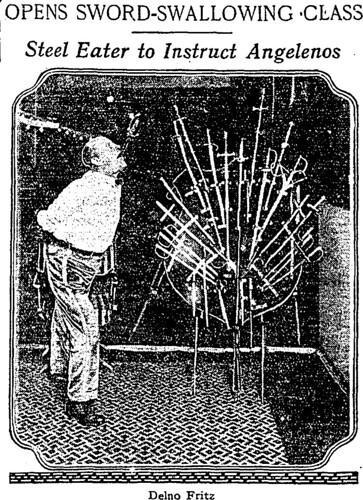 Our photo shows Delno Fritz, retired circus sword swallower who settled in at the World Museum in 1924 to offer beginners’ lessons in downing table knives and desk shears, with advanced courses in sabers. (Delno Fritz clipping: Los Angeles Times)
Our photo shows Delno Fritz, retired circus sword swallower who settled in at the World Museum in 1924 to offer beginners’ lessons in downing table knives and desk shears, with advanced courses in sabers. (Delno Fritz clipping: Los Angeles Times)


